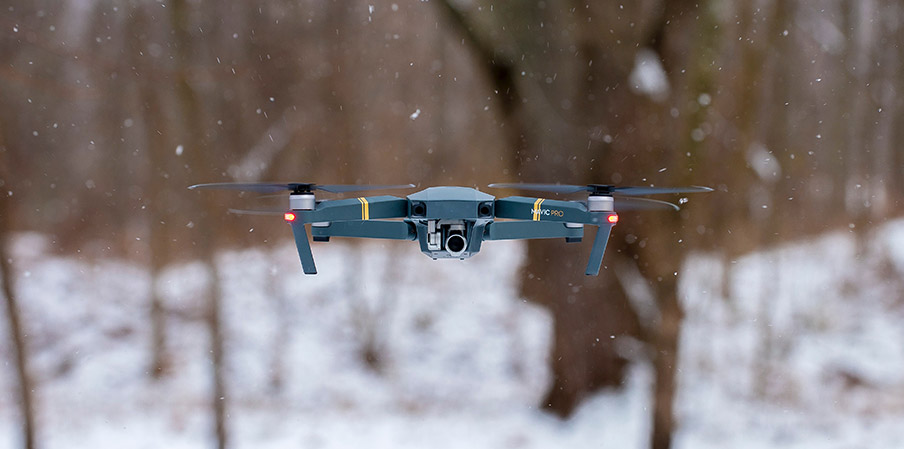So you’ve just received a shiny new drone for Christmas – which, let’s face it, is probably one of the best presents ever. But now you’re wondering if you need any training? Or maybe the paper airplane flying you did in school is enough? Don’t worry, we’ve got you covered!

It’s important to understand the new laws and regulations around drones
First things first, though, before you get carried away (don’t worry, you’ll be able to do that soon) – do you understand the legalities and technicalities of owning a drone? No? Okay, keep reading.
Modern drones are a technical piece of equipment, with some serious legal and risk implications. Knowing the basics and making sure you are covered will prevent any major hassles later on. Don’t worry, we promise to go easy on you.
Can I fly my new drone anywhere?
This is where things get a little more complicated. As of January 1st 2021, the UK drone laws changed. This means you can no longer fly in, or close to recreational, residential, commercial or industrial areas. You will need to stay 150 metres away from these areas, and 50 metres away from anyone who is not directly involved with your flight (when in a safe area). This makes it very difficult to find anywhere to fly your shiny new drone, especially as you can no longer fly in your local park, or even in your garden (especially in built up areas).
The rules relate to where you can fly, how close you’ll be to other people and the size of your aircraft. Together, these factors will determine the risk of the flight.
The new rules are separated into three classifications: Open, Specific and Certified. A lot of recreational users will be under the Open category, which has three sub categories that limit how and where you can fly near people, parks and built-up areas. For more flexibility within the Open category, you can complete the A2 Certificate of Competency (A2 CofC). This is a new course approved by the CAA and run by iRed. The course has been designed to broaden where recreational pilots can legally fly their drones.
The A2 CofC will allow you to fly your new drone closer to people and buildings – without it, you will need to fly at least 50m away from people (when in a safe area), as well as 150m away from all residential, industrial, commercial and recreational areas. Unfortunately, this means you won’t be able to go to your local park or beach to try out your new drone!
Do I need drone insurance?
If you are just going to use your drone as a hobby, then technically you don’t. However, any damage that happens to your wonderful new drone (or because of it) will be your responsibility, so you need to think about the implications of that. If you are learning to use your drone for commercial purposes, you do need drone insurance.
Can a child fly a drone?
Young drone pilots will need to be at least 12 years old to fly a drone by themselves. It is possible to fly a drone if they are under 12, however they will need supervision by someone 16 or over. In these circumstances, both pilots will need to have passed the online CAA flyer ID test.
Do I need to register my drone?
The UK’s Drone and Model Aircraft Registration and Education Service (DMARES, part of the CAA) has a registration system for anyone responsible for a drone or unmanned aircraft. If your new drone is not a toy (i.e. has a camera attached or weighs more than 250g) you will also need to register as a drone operator. You must then label your new operator ID on to your drone (in clear block capitals, larger than 3mm). Whilst this is an extra step for new pilots, it does mean that if you accidentally lose your drone it can be easily returned by someone finding your ID marking (a bit like a registration plate on a car).
Does being registered in the UK mean that I can fly in any country?
Unfortunately not as your registration is only for the UK. If you want to fly your new drone outside of the UK, you will need to investigate the regulations in the country you’re visiting.
What else do I need to know?
The most important thing to remember is to always keep your drone in sight! As tempting as it is to go above trees, through gaps in buildings and generally pretend that you’re controlling a miniature Tom Cruise in Top Gun in there, you need eyes on the prize at all times! A little extra training will mean more freedom with your flying, so if you want to have more flexibility, you will need to put a little more effort in.
Just try to be conscientious and remember that as much as the drone is fun, it is also a hazard, especially in the wrong hands. The more you keep yourself informed and get yourself trained, the less of a hazard it (and you) will be! We haven’t covered every single legal issue and requirement for flying your drone here, but you should make sure you are fully aware before you take your drone out for a spin. If you would like a complete overview of what you need to know – or would like to expand where you can fly – we highly recommend one of our CAA approved training courses.
Commercial Drone Training
Founded in 2002, iRed has the UK’s largest range of specialist drone training courses (including e-learning options), all of which are taught by the industry-leading experts in drone technology.
If you’re looking to get more from your drone, or perhaps start a career as a drone pilot, then get in touch and we can help you get qualified.

